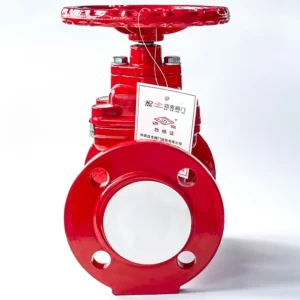Ductile iron gate valve are commonly used in various applications, and implementing corrosion prevention measures can help extend their lifespan and maintain their performance. Here are some common corrosion prevention measures for ductile iron gate valves:
Protective Coatings:
Applying protective coatings to the external surfaces of ductile iron gate valves can provide a barrier against corrosive elements. Epoxy coatings or fusion-bonded epoxy (FBE) coatings are commonly used to protect the valve body and components. These coatings create a durable and corrosion-resistant layer that helps prevent direct contact between the iron surface and corrosive substances.
Cathodic Protection:
Cathodic protection is a technique used to protect metal structures from corrosion by making them the cathode of an electrochemical cell. Sacrificial anodes or impressed current systems can be employed to provide cathodic protection for ductile iron gate valves. These systems help to redirect corrosion away from the valve by sacrificing a more easily corroded metal.

Chemical Inhibitors:
Chemical inhibitors can be used to mitigate corrosion by introducing substances that form a protective film on the metal surface. These inhibitors can be added to the fluid flowing through the valve, providing corrosion resistance to the internal components. It’s important to select inhibitors that are compatible with the fluid and operating conditions.
Regular Cleaning and Maintenance:
Routine cleaning and maintenance are essential to prevent the accumulation of debris, sediments, or corrosive substances on the valve surfaces. Flushing the valve periodically can help remove any buildup that may contribute to corrosion. Regular inspections should also be conducted to identify any signs of corrosion or damage, allowing for timely repairs or replacements.
Proper Installation:
Ensuring proper installation of ductile iron gate valves is crucial for corrosion prevention. Follow manufacturer guidelines and industry best practices for installation procedures, including proper sealing, torque specifications, and appropriate gasket materials. Incorrect installation can lead to leaks or create conditions that promote corrosion.
Environmental Considerations:
Consider the environment in which the ductile iron gate valve operates. Assess factors such as humidity, temperature extremes, exposure to chemicals, or soil conditions. Implement measures such as protective covers, insulation, or coatings specific to the environmental conditions to enhance corrosion resistance.
Monitoring and Inspection:
Regular monitoring and inspection of ductile iron gate valves can help identify corrosion issues at an early stage. Implement a maintenance schedule that includes visual inspections, leak detection, and condition assessments. Utilize non-destructive testing techniques, such as ultrasonic thickness measurements, to assess the thickness of the valve components and identify potential corrosion areas.
It’s important to note that the specific corrosion prevention measures for ductile iron gate valves may vary depending on the operating conditions, application, and regulatory requirements. Consulting with corrosion specialists, valve manufacturers, or industry experts can provide valuable guidance on selecting and implementing the most suitable corrosion prevention measures for your specific ductile iron gate valve installations.